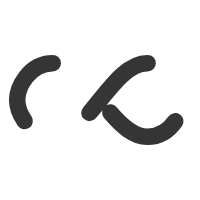Social media has become a powerful tool for the marketing since the world has shifted to the digital marketing. SMO or social media marketing/optimisation has not only garnered attention from the start-ups or small businesses because it is inexpensive but also from the huge establishments because of its massive reach among the masses. Both Instagram and TikTok have emerged as the leading platforms for the social media marketing.

Introduction: Short Form Video Craze – Instagram Reels Vs TikTok
Short form videos on social media platforms have taken the world by the storm especially the business houses and establishments. The pandemic triggered a trend of short videos which became instant success due to its short time span.
The craze among the masses was driven by multiple factors such as virality potential – reaching millions overnight, creative expression – allowing people to perform a skit, dance or even singing and the most significant one was the algorithm play – where the platforms push these videos if they are short, specific and following the current trend.
Digital Marketing – Instagram Reels Vs TikTok
Reels and Tiktok videos have dominated the marketing because the establishments are using these platforms to promote, market and even sell their products through sponsorships, influencer market and direct advertisements. As talked before, the algorithm pushes the content to larger audience and thus the reach of the products or website could maximise.
Instagram reels and TikTok have emerged as leading platforms in social media for digital marketing because they were cost effective when compared to traditional marketing. The cost of input is minimal with large organic reach. The creativity in the videos helps the companies to make the videos reach the audience faster.
The rise of both Instagram and TikTok was seen in previous decade and escalated quickly after the pandemic which restricted people to their households for the longer duration. According to the latest popular blogs, the demographics of Instagram and TikTok is not entirely different but rather overlapping.
Audience and Reach: Instagram Reels and TikTok
Instagram – popular among ages 24 – 40 years. The typical audience is millennials and GenZ. While the Gen Z is ruling the Instagram algorithm, Gen alpha has also started to dominate the platforms with their creativity.
Typical users also include Professionals, small business owners and influencers who find new opportunities on this platform to push their marketing and attract the masses through short videos. The content is aesthetically driven and polished marketing the lifestyle, fashion, beauty, travel and business tips.
TikTok – Popular among the ages 16 – 30 years. While the stronger traction is with teenagers and Gen Alpha, the typical audience is the younger millennials and Gen Z.
The content, unlike instagram is less polished, giving more authentic vibe. It’s more raw, trend-driven, fast paced. The user base is inclined towards young gen like students, creators and entertainers making niched communities to popularise certain hobbies like booktok and cleantok.

Engagement And ROI: Instagram Reels Vs TikTok
As of 2025, TikTok boasts an average engagement rate of 18%, significantly higher than Instagram’s 5%. TikTok is renowned for its high engagement rates and robust organic reach. The platform’s algorithm is designed to promote content from both new and established creators, making it easier for videos to go viral.
If the target audience is varied and wide, then Instagram is the better option for the higher organic reach because the user base of the TikTok is skewed, dominated by the younger audience.
TikTok’s algorithm pushes the content towards virality hence the content has better chance to blow up than compared to Instagram and that is why the engagement rate of former is higher than the latter.
TikTok offers low cost to advertisers with an average cost per mille (CPM) of $3.48 and a cost per click (CPC) of $0.50. While that of Instagram is a little higher with averaging cost per mille of $8.58 and cost per click of $0.84.
Higher engagement rate of TikTok makes it more effective for brand awareness campaign thus increasing it ROI by 6.54% more than Instagram. Despite high engagement, TikTok’s conversion rate averages at 3.4% while Instagram, reports a lower conversion rate of 1.08% .
As mentioned before too, Instagram becomes the better choice, if the marketing is focusing on diverse age groups because TikTok targets young age group thus not appropriate for brands looking for varied audience.
Influencer Marketing: Instagram Reels Vs TikTok
Approximately 80.8% of US marketers utilize Instagram for influencer marketing campaigns, reflecting its established presence in the marketing landscape. Instagram’s engagement rates range from 1.77% to 3.65%, varying with follower count. The platform supports diverse content formats, including photos, stories, and reels, allowing for versatile marketing strategies. Despite the high engagement, Tiktok’s influencer marketing is trailing behind Instagram because of its limited target audience and unpolished content.
There are also numerous regulations when it comes to TikTok because it has faced several bans in multiple countries reducing its user base by a large population. TikTok recently faced a one day ban in United States and also is completely banned in countries like India, Nepal and Kyrgyzstan. These bans impacts campaign stability so brands would have to stay informed about such developments when planning long term strategies. As part of meta platforms, Instagram enjoys a certain degree of stability and protection in social media landscape. This advantage makes Instagram more dependable than TikTok for long term strategies.
Conclusion
Both platforms offer unique advantages for influencer marketing. TikTok excels in engaging younger audiences with dynamic content and offers substantial organic reach. Instagram provides versatility in content formats and access to a broader demographic. Your choice should align with your brand’s target audience, content strategy, and awareness of the evolving regulatory landscape.
